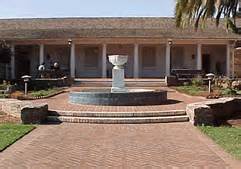
In 1769 the Spanish explorer Don Gaspar de Portola discovered the land area which is now known as the City of Santa Cruz. When he came upon the beautiful flowing river, he named it San Lorenzo in honor of Saint Lawrence. He called the rolling hills above the river Santa Cruz, which means holy cross.
Twenty-two years later, in 1791, Father Fermin de Lasuen established a mission at Santa Cruz, the twelfth mission to be founded in California. Across the San Lorenzo River, in what is now known as East Santa Cruz, Villa de Branciforte was established It was founded by the Spanish as one of three civil settlements or pueblos in California. The other pueblos were San Jose and Los Angeles. Villa de Branciforte later merged with the Mission Santa Cruz community across the river.
By the 1820’s Mexico had assumed control of the area and within the next twenty years, Americans began to arrive in great numbers. California became a state in 1849, and Santa Cruz County was created in 1850 as one of the twenty-seven original counties.
By the turn of the century logging, lime processing, agriculture, and commercial fishing industries prospered in the area. Due to its mild climate and scenic beauty Santa Cruz also became a prominent resort community.
Santa Cruz was incorporated in 1866 as a town under the laws of the State of California and received its first charter as a city in 1876. At that time the city was governed by a Mayor and Common Council consisting of four members.
In 1907, the citizens voted for a new charter designating a Mayor as chief executive and a City Council consisting of seven members. Subsequent charters gave a Mayor and four Commissioners both executive and administrative powers. At that time the city was divided into five departments: Public Affairs, Revenue and Finance, Public Health and Safety, Public Works, and Streets and Parks.
In 1948, the City of Santa Cruz adopted a new City Charter. This charter established a Council-Manager form of government, with a Mayor and six Councilmembers setting policy for the city and a city manager serving as the chief administrator of those policies. The Charter, with amendments, is still in existence today.
SERIES I. SANTA CRUZ CITY CHARTER (1947)
A ledger book and five (5) folders
Series Scope and Content Summary: This series contains documents, correspondence and newspaper clippings related to the rewrite of the Santa Cruz City Charter in 1947.
From Wikipedia: The range of what is considered a “charter city” may lead to definitional ambiguities. Most times, however, a charter city is founded by charter before large-scale development takes place. While a city may adopt a new “charter” long after its first codification of rules, as in the cases of many cities in California, generally the designation of a charter city is reserved for those municipalities whose charter guides development decisions or influences the creation of social structure from the beginning, as in the case of Hong Kong. A charter city may have some exemptions from some state or provincial laws, which varies entirely for each particular region.
With the help of a guiding charter, cities may be able to avoid administrative inefficiencies and establish rules with alternate social motivations. Thus, one benefit of charter cities is the freedom they offer in establishment of rules of governance. For example, many charter cities, like Hong Kong and Singapore as cities, use alternative forms of property taxation. Because charter cities are often founded with a goal of large-scale urban development, efficient use of the city’s limited land is of utmost importance, for both the economic sustainability of the citizens and the government units. Thus, rather than using the traditional tax on both property and land, charter cities may use land value taxation, which taxes only the value of land, thus not providing disincentives for development.
This series contains a ledger book and five (5) folders:
Santa Cruz Board of Freeholders Ledger Book. This ledger is divided into sections for ‘Finance’, ‘Public Works’, ‘Health and Safety’, ‘Streets and Parks’, ‘Rules and Regulations’, ‘City Manager’, and ‘Minutes’ all related to the rewrite of the City Charter in 1947.
Folder #1: Correspondence Between Santa Cruz Members. This correspondence is primarily in reference to the elementary and high school districts.
Folder #2: Copy of the Charter for the City of Burlingame (1946).
Folder #3: Proposed Charter for Santa Cruz.
Folder #4: Correspondence From Outside Entities. This correspondence is from the National Municipal League, League of California Cities, and other cities in California.
Folder #5: Newspaper Clippings
SERIES II. DECK PLAN SHOWING BUILDINGS, DAVITS, ETC. (1933 – 1934?)
One (1) Notebook
Series Scope, Content and Summary: This series contains one (1) notebook in which there are sketches of the wharf with the buildings, who owned or rented them, etc. This notebook also shows the davit locations. Towards the back of the book is a listing of “Buttons” issued. These items are on long-term loan to the Santa Cruz MAH from the City of Santa Cruz. The proper citation for these items is: Municipal Wharf Records, City of Santa Cruz, Santa Cruz, CA.
SERIES III. MUNICIPAL WHARFINGERS CASH BOOK (1915 – 1928)
Two (2) Notebooks
Series Scope, Content and Summary: This series contains two (2) notebooks in which there are month by month listing of rent collected. These items are on long-term loan to the Santa Cruz MAH from the City of Santa Cruz. The proper citation for these items is: Municipal Wharf Records, City of Santa Cruz, Santa Cruz, CA.
Cash Book, 1 July 1915 to 30 June 1922
Cash Book, 1 July 1922 to 30 June 1928